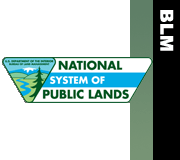|
Print Page | ||||||||||||
| Wilderness | |||||||||||||
GUNNISON GORGE WILDERNESS is within the black granite and multi-colored sandstone double-canyon system of the Gunnison River and the Gunnison Gorge National Conservation Area. Encompassing 17,784 acres of public lands and 14 miles of river, the wilderness extends north from the northwestern edge of the Black Canyon of the Gunnison National Park to two miles downstream from the confluence of the Smith Fork and the Gunnison River. This area is managed for its outstanding wilderness, scenic and non-motorized recreational values, and offers technical (Class III-IV) remote boating experiences for rafters, kayakers and whitewater canoeists. There is also world-class gold medal trout fishing, and challenging backcountry hiking and camping opportunities throughout the area. This wilderness is managed by the BLM Uncompahgre Field Office. POWDERHORN WILDERNESS encompasses 48,115 acres of public lands along with 13,395 acres of U.S. Forest Service lands in the northern reaches of the San Juan Mountains. The glacier-carved landscape consists of large expanses of alpine tundra, spruce forests, and several natural lakes at nearly 12,000 feet in elevation. Elk, mule deer, black bear and bighorn sheep call the plateaus of this area home. At lower elevations, visitors can wander through stands of aspen, pine and fir trees. Within the wilderness, visitors can explore over 45 miles of trails that provide access for hiking, horseback riding, fishing, hunting and camping. This wilderness is managed by the BLM Gunnison Field Office and U.S. Forest Service. UNCOMPAHGRE WILDERNESS encompasses 3,390 acres of BLM-managed land within the 102,721-acre wilderness of the north-central San Juan Mountains. BLM and U.S. Forest Service lands combine to create an area of gently rolling alpine tundra meadows, mountainous landscapes, rock castles and densely forested canyons. This wilderness boasts two “fourteeners” and more than 34 peaks over 13,000 feet in elevation. Several forks of the Cimarron River roar through the wilderness before merging, and various lakes and streams can be found throughout the area. Visitors can explore over 100 miles of trails that provide opportunities for hiking, horseback riding, hunting, fishing, mountaineering, rock-climbing and camping. This wilderness is managed by the BLM Gunnison Field Office and the U.S. Forest Service. DOMINGUEZ CANYON WILDERNESS is a 66,280-acre expanse located within the Dominguez-Escalante National Conservation Area. The sandstone canyons and pinyon-juniper covered mesas of the wilderness offer excellent hiking opportunities. Year-round, water runs through the Little Dominguez Creek creating a great habitat for many birds, mammals and reptiles. Desert bighorn sheep have been reintroduced to the area and visitors can often see the sheep grazing at the base of the cliffs in the wilderness. Rock art on the canyon walls and wickiups on the mesas testify to the thousands of years the Native Americans used the area for hunting, shelter and as a travel corridor from the Gunnison River Valley to the Uncompagre Plateau. These canyons also show traces of the early miners and settlers who lived and worked throughout the area. To view a map click here. OTHER SPECIAL DESIGNATIONS: In addition to national monuments, national conservation areas, national historic and scenic trails, wild and scenic rivers and wilderness areas, the NLCS includes other lands known as “congressional designated management areas” --- the Tabeguache Area is an example. The Tabeguache Area is 17,240 acres of public land jointly managed by the BLM and U.S. Forest Service, 4 miles north of the town of Nucla. The Colorado Wilderness Act of 1993 defined the pinion-juniper, and ponderosa pine and oak brush lands here a congressionally designated management area. As an “Area” BLM manages this landscape to protect its wilderness values, but it is not a wilderness area. Visitors can enjoy hiking, backpacking, horseback riding, fishing and wildlife viewing. The BLM Uncompahgre Field Office manages this area. |
|||||||||||||







